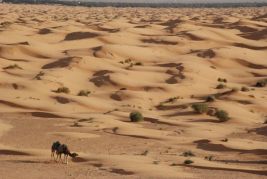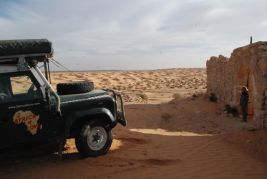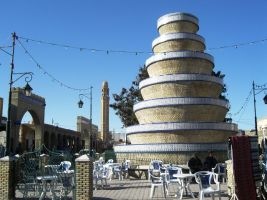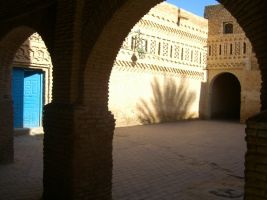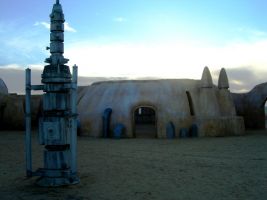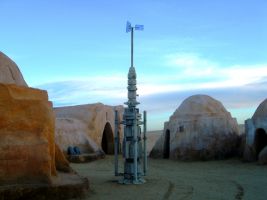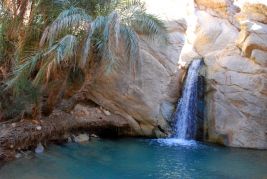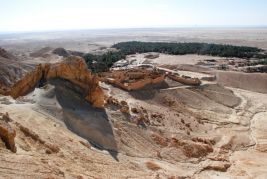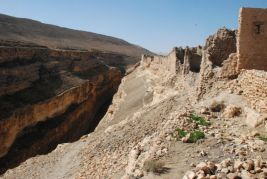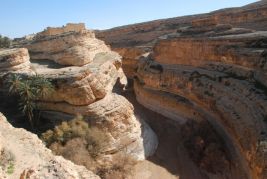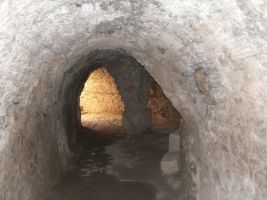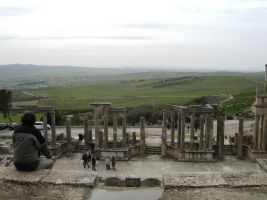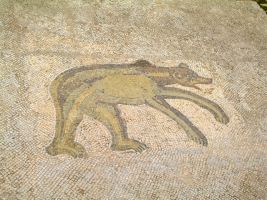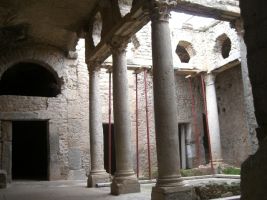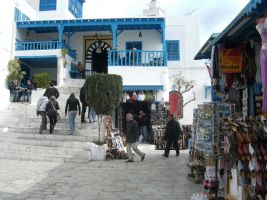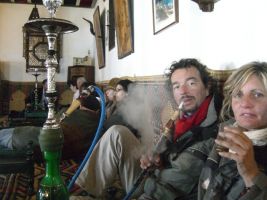
 Italia
Italia France
France Spain
Spain Morocco
Morocco Mauritania
Mauritania Senegal
Senegal Mali
Mali Burkina
Burkina Ghana
Ghana Togo
Togo Benin
Benin Nigeria
Nigeria Cameroon
Cameroon Gabon
Gabon Sao Tomè
Sao Tomè Gabon 2
Gabon 2 Congo
Congo Congo DCR
Congo DCR Angola
Angola Namibia
Namibia Sud Africa
Sud Africa Namibia 2
Namibia 2 Botswana
Botswana Zimbabwe
Zimbabwe Botswana 2
Botswana 2 Sud africa 2
Sud africa 2 Swaziland
Swaziland Mozambico
Mozambico Malawi
Malawi Tanzania
Tanzania Rwanda
Rwanda Uganda
Uganda Kenya
Kenya Etiopia
Etiopia Sudan
Sudan Egitto
Egitto Libia
Libia Tunisia
Tunisia Malta
Malta
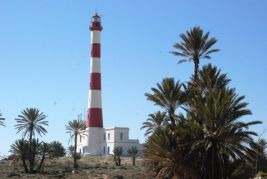
TUNISIA
Entrance into Tunisia is quick; no Carnet needed here. Vehicle details are written on the owner’s passport and then cancelled when you leave the country. Car, immigration, customs and we’re off! We drive towards the island of Djerba. A famous tourist destination that can be reached thanks to a bridge built by the Romans that joins it to mainland.
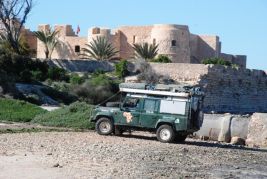
Djerba – 31 Jan 2009
As we pass through this country we try and visit the less obvious routes instead of the bog-standard tourist ones. On the island, we go to see the fortress of Ghazi Mustafa built by the Turks in the 13th century during the Ottoman Empire. In 1560, the Spanish tried to conquer it by invading the island but were defeated, having their heads cut-off and stuck on poles outside the castle walls. In fact, so many enemies were slaughtered that they made a 30m wide pyramid for them; it stood 300-years both as a warning and as a monument to their victories.
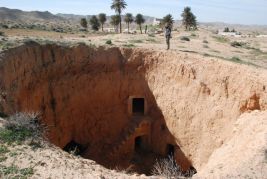
The troglodyte houses of Mattata – 1 Feb 2009
On the road towards the oasis’ we stop in Mattata. Here the Berbers have dug-out houses in the ground to protect themselves from the heat. One of them, was used as a set on the Star Wars films
Ksar Ghilane oasis
Just as you imagine it, the most famous southern oasis.
Planted in a sea of sand, it has warm water which makes for a pleasant swim. Not far from here are the remains of a Roman fortress that was used by different armies throughout history.
The most southerly outpost, it was the Roman Empire’s frontier towards the desert.
Inside and make a nice fire in preparation to spend the night
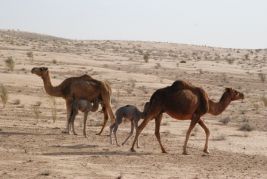
Off-Piste
Thanks to a few GPS points, we travel along a 120km track of sand that next month will be host to the 100km Sahara foot race.
We were just curious to see the course; so much sand!!!
It so happens that we have also come across a rather blustery day that covers our car tracks in less than 2 minutes.
An interesting test for our orientational skills.
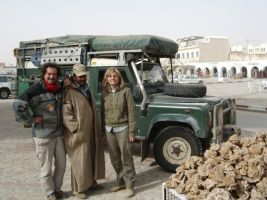
Hedi of Douz – 2 Feb 2009
We go and visit our friend Hedi in Douz. He’s a desert expert and he recounts the fascinating stories about his great grandfather, an African explorer.
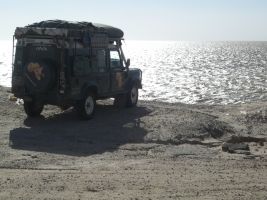
Chott – 3 Feb 2009
Still heading north.
Still heading towards Algeria.
We travel for what seems forever over the huge salt plain of Chott El Jerid. It is a huge salt sea, were once millions of years ago, there was a real sea.
It is an ideal place for mirages. There is only one safe course one can take to cross it; it is a surprise to see it so flooded.
Once we reach the city, we ask the locals if it is normal for it to be flooded like this in January. The repeated reply through fixed smiles is that it is only a mirage, that it’s not possible to have so much water in the desert.
Heavens above, they produce some pretty amazing mirages here in Tunisia!
Tozeur – 4 Feb
A grand and famous oasis, sung about in many songs, dreamt about by many 19th century travellers.
It is famous for its extraordinary dates, called Deglet Nour “the fingers of Venus”, and for the buildings made from sun dried mud-bricks. The medina is very nice; it has many inhabitants and is authentic, without tourist shops.
Cinema and desert
Algeria is 20-kilometres from here. The people here are not too keen on their bordering neighbours. They find them dangerous and distrustful. Lately, there have been cases of sequestration by Algerian gangs from tourists; some of these gangs are fragmented military units. The police in Tunisia are always on alert and don’t allow anyone from Algeria to get near the frontier from the less used roads.
In the dunes, 35-kilometres from Tozeur and 20-kilometres from Nefta, there are two sites that were used as film sets, “The English patient” and Star Wars, both films shot a lot of scenes here; you can go and visit them with a 4x4.
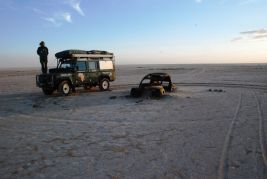
Nefta – 5 Feb 2009
It is the most western oasis of Tunisia, a huge producer of dates and a unique place where you can visit the great Chott salt sea. When it is dry, it is a pleasurable experience driving around on it, but with humidity it can become a lethal trap. Many groups of expert off-roaders have had to leave their cars after becoming bogged down in the salt. The surface layer dries up forming a crust hiding the water beneath. If you get it wrong and break through this surface crust, you’re doomed. At the end of the day, when we assume that the humidity level is at its lowest, we take careful look around.
Chebica
The desert finishes and the mountains begin. Rocky, bare, sunny. What was once the bottom of the sea is now bare rock with many minerals and shell fossils. From the rocks, just like in fairytales, water pours from the mountain and the Chebica Oasis is born.
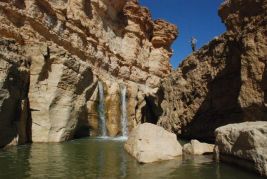
Tamerza - waterfalls in the desert
We come across another strange thing, a waterfall in the rocky desert. They call it the “Grand Falls” and for a tourist it may seem like nothing much, but you have to remember where you are, that makes it easy to understand why the locals are so amazed by it.
Mides
We are just a few metres from the Algerian border. Over the centuries, water has made a ravine; its constant flow continues its work. The remains of an old long abandoned mud village provide an evocative backdrop.
Countryside
As the desert ends the landscape begins to resemble Tuscany. Countryside, farming and cultivation, where many olives and cypresses are grown. The fertile, rich land of Tunisia. There are many shepherds with their sheep; we even manage to run one over (a sheep that is).
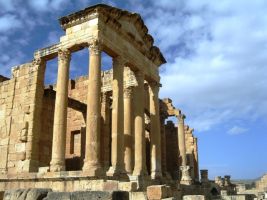
Sbeitla
The ruins of a Roman city with a triumphal arch and the Capitol, its three buildings close together forming a perimeter to the forum. There are various villas and a Byzantine church built on the site of an old temple.
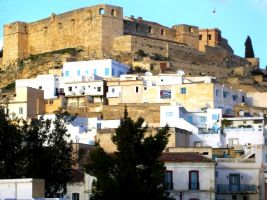
El Kef – Feb 2009
Very few tourists come here. Life here still seems “genuine”. In many bars, which seem packed at every hour of the day, women are forbidden to enter. The fortress of uuuuu dominates the scenery, lying at its feet are the tight narrow roads that put us in mind of those on the Sicilian islands.
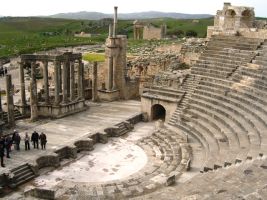
Dougga – 6 Feb 2009
On a hill surrounded by olive trees this huge Roman city is still evocative, built over a Punic village that dates back to 200 B.C. It’s a shame that it is so far off the normal tourist routes, because it really is worth seeing. The Theatre, the Roman Forum and the many thermal baths with holes underground where the slaves used to stoke up a fire to warm the water are all very imposing. The market plaza is very nice with the nearby roman rose of the wind carved into the stone paving. Many villas here as well, some even majestic; also, there are many tanks and canals for collecting rain water.
Bulla Regia – 6 Feb 2009
City founded 400 years before Christ, it fell into the hands of the Romans in 46B.C. following the Punic Wars. The emperor Adrian lived here between 117 and 138A.D. The uniqueness of the place lies in the houses and villas that are built underground. Villas with mosaics and columns, all built in the ground.
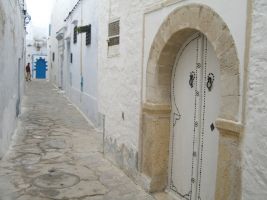
Hammamed – 7 Feb 2009
Back on the coast, along the big tourist routes. In Hammamed, we go and visit the medina, avoiding herds of suffocating vendors. We also nip to Nabeul, the ceramic area, only to find that tourism has turned it into an unbearable market-city with European prices and nothing authentic left.
Sidi Bou Said – 8 Feb 2009
It is here in Tunisia that we will board ship and head for Genoa. Not far from here is the characteristic town of Sidi Bou Said. In it, is a shop with the most famous terrace in all of Tunisia. You can have mint tea and smoke hookahs or shishas.
Three years ago in this café, I discussed with adventurous friends my dream of making this journey around Africa by car. Now here we are in the same café having done it; it seems quite unreal. And after 15-months, it is hard to imagine that this is our last day in Africa.
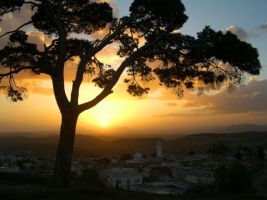
Our Impressions
Small Tunisia is the “easiest” African country.
Well connected to Italy with boats and aeroplanes, the roads are good and it is a relatively safe place. Tourism is a huge resource and there are different ways to experience it, depending on your reasons for visiting. The democracy is typically African, therefore only one candidate; one president for many years. A “presidential dictatorship” as we ironically like to call African democracy. But here, in a bar and in a restaurant full of local friends they support and like this; people prefer it this way. All things, they say, are better run like this. We listen to this, a little taken aback. This is how things work, they repeat. Thinking about it, actually this is a place where people seem to be better off; there are schools, universities, hospitals, work and social peace. The police have orders from the government not to get in the way of the tourists, to our eyes, everything seems perfect.
